All issues

Successor
Volume 5 (2001)
- Issue 3 Pages J81-
- Issue 2 Pages J59-
- Issue 1 Pages J1-
Volume 5, Issue 3
Displaying 1-1 of 1 articles from this issue
- |<
- <
- 1
- >
- >|
-
Naruo KAWASAKI, Koji NAKADA, Qi JINFENG, Nobuyoshi HANYU, Masatoshi NA ...2001 Volume 5 Issue 3 Pages J81-J92
Published: December 27, 2001
Released on J-STAGE: July 21, 2010
JOURNAL FREE ACCESSPylorus preserving gastrectomy (PPG) has been thought as a beneficial reconstruction procedure to reduce the incidence of postgastrectomy syndrome, and then, to ameliorate quality of life of the gastrectomized patients.
In the early postoperative period after PPG, however, dyspeptic symptoms such as bloating or early satiety were commonly observed. This may be caused by altered motility after PPG. To investigate this problem, we studied fasted and fed motility in control (η=4) and PPG dogs (η=4) by using strain gauge transducer method in conscious state. Gastric emptying of the liquid meal was also assessed by paracetamol method.
In fasted state, the contractions were rarely seen, and interdigestive migrating contractions (IMCs) had not appeared in the gastroduodenum at early postoperative period. In contrast, the incidence of pyloric contractions had greatly increased. These motility changes had seen in both group of dogs, however, was more evident in PPG dogs. IMCs began to appear in the gastroduodenum at one week in control dogs and at two weeks in PPG dogs, respectively. Although the IMCs appeared in PPG dogs were rather atypical. During IMCs, when the antrum was contracted, the pylorus was synchronously relaxed in control dogs, though the pylorus was not relaxed with the contraction of the remnant stomach in PPG dogs.
In fed state, there was no remarkable motility change between control and PPG dogs. Gastric emptying of the liquid meal was delayed in PPG dogs both in fasted and fed state. These motility changes in PPG dogs may, in part, explain the occurrence of dyspeptic symptoms in the PPG patients at early postoperative period.View full abstractDownload PDF (1406K)
- |<
- <
- 1
- >
- >|